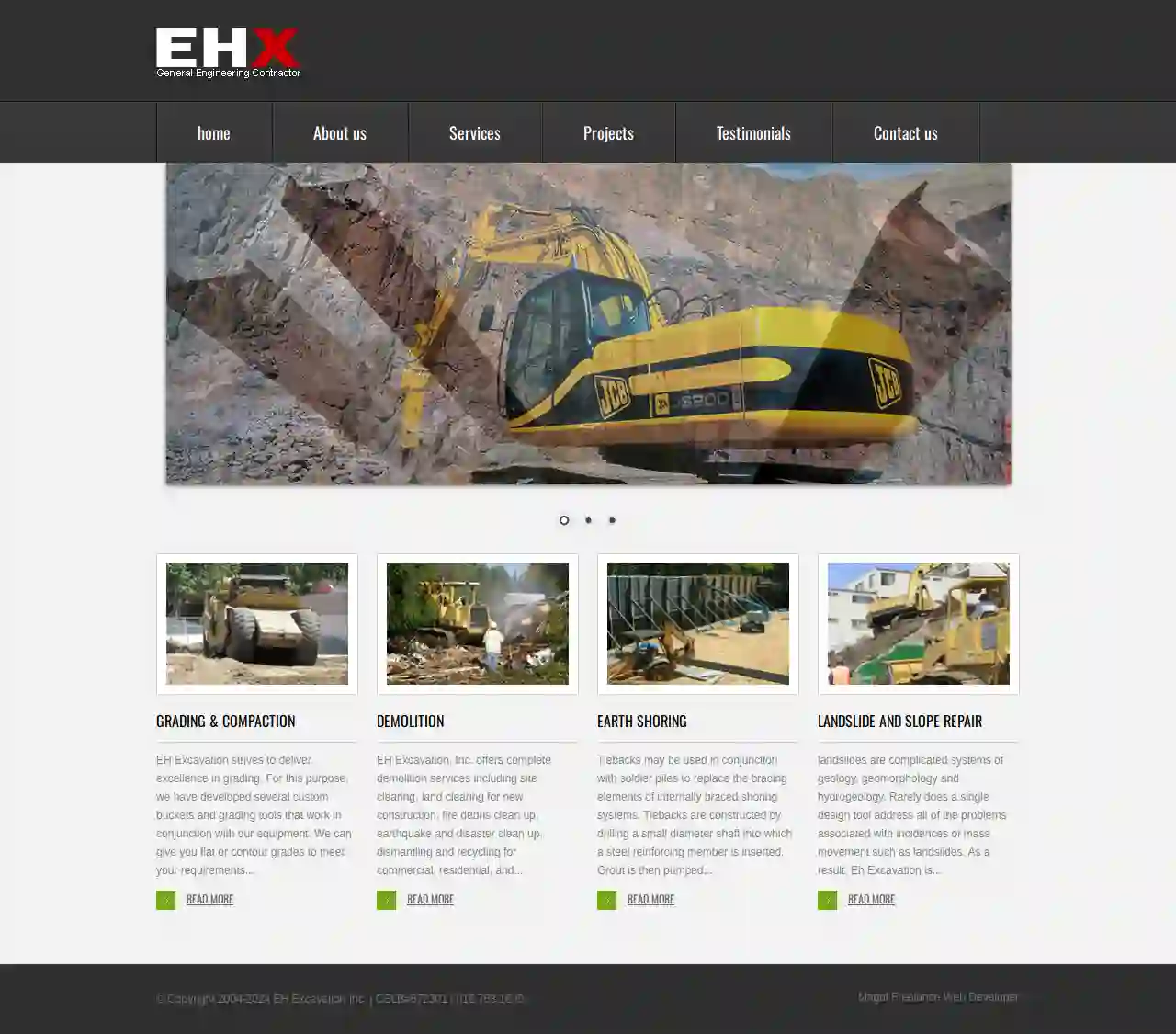Asbestos Removal Contractors Glendale
Find the best Asbestos Removal in Glendale
Get up to 3 Asbestos Removal Contractors quotes for your project today! Compare profiles, reviews, accreditations, portfolio, etc... and choose the best deal.

EH Excavation, Inc.
1Glendale, USEH Excavation: Your Trusted Partner for Grading, Demolition, and More EH Excavation is a leading provider of grading, demolition, and earth shoring services in Los Angeles. We are committed to delivering excellence in all our projects, utilizing our expertise and state-of-the-art equipment to meet your specific needs. Our team of experienced professionals is dedicated to providing high-quality services with a focus on safety, efficiency, and customer satisfaction. We understand that every project is unique, and we take a personalized approach to ensure that your goals are met. Whether you need a flat or contour grade, site clearing, or landslide repair, we have the skills and resources to handle it all. We are also committed to sustainable practices and strive to minimize our environmental impact. At EH Excavation, we believe in building strong relationships with our clients. We are dedicated to providing clear communication, transparent pricing, and exceptional customer service throughout the entire project lifecycle. Contact us today to discuss your project and learn how we can help you achieve your goals.
- Services
- Why Us?
- Gallery
Get Quote
Over 3,943+ Excavation Contractors on our platform
Our excavation contractors operate in Glendale and surroundings!
ExcavationHQ has curated and vetted the Best Excavation Pros in Glendale. Find the most trustworthy pro today.
Frequently Asked Questions about Asbestos Removal
- Chrysotile (white asbestos):
- Amosite (brown asbestos):
- Crocidolite (blue asbestos):
- Anthophyllite:
- Tremolite:
- Actinolite:
- Inspection and Assessment: A qualified inspector identifies and assesses the asbestos-containing materials.
- Containment: The work area is sealed off with plastic sheeting and negative air pressure is established to prevent fiber release.
- Removal: Licensed professionals wearing protective gear carefully remove the asbestos-containing materials.
- Disposal: The removed asbestos is sealed in leak-proof containers and transported to a designated disposal facility.
- Air Monitoring and Clearance Testing: Air samples are collected and analyzed to ensure no asbestos fibers remain airborne.
- Restoration: After clearance testing, the work area is cleaned and restored to its original condition. The exact process may vary depending on the specific asbestos removal method and local regulations.
- Environmental Protection Agency (EPA): EPA.gov
- Health and Safety Executive (HSE): HSE.gov.uk
- Local Government Environmental Health Department:
What are the different types of asbestos?
What is the process for asbestos removal?
Where can I find more information about asbestos removal regulations?
Can I remove asbestos myself?
What are the different types of asbestos?
- Chrysotile (white asbestos):
- Amosite (brown asbestos):
- Crocidolite (blue asbestos):
- Anthophyllite:
- Tremolite:
- Actinolite:
What is the process for asbestos removal?
- Inspection and Assessment: A qualified inspector identifies and assesses the asbestos-containing materials.
- Containment: The work area is sealed off with plastic sheeting and negative air pressure is established to prevent fiber release.
- Removal: Licensed professionals wearing protective gear carefully remove the asbestos-containing materials.
- Disposal: The removed asbestos is sealed in leak-proof containers and transported to a designated disposal facility.
- Air Monitoring and Clearance Testing: Air samples are collected and analyzed to ensure no asbestos fibers remain airborne.
- Restoration: After clearance testing, the work area is cleaned and restored to its original condition. The exact process may vary depending on the specific asbestos removal method and local regulations.
Where can I find more information about asbestos removal regulations?
- Environmental Protection Agency (EPA): EPA.gov
- Health and Safety Executive (HSE): HSE.gov.uk
- Local Government Environmental Health Department: